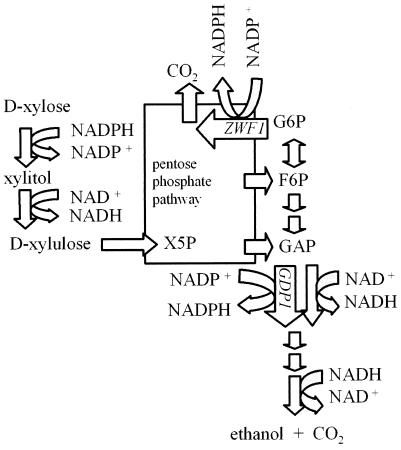FIG. 1.
Redox cofactors in the metabolic pathway for d-xylose fermentation. d-Xylose is converted to d-xylulose through an NADPH-utilizing reductase and NAD+-utilizing dehydrogenase. d-Xylulose is then phosphorylated to the pentose phosphate intermediate d-xylulose 5-phosphate (X5P). The products of the pentose phosphate pathway are fructose-6-phosphate (F6P) and GAP. GAP is reduced through an NADP-GAPDH, encoded by GDP1, or by the endogenous NAD-GAPDH, depending on cofactor availability. In the following reactions involving an NADH requiring alcohol dehydrogenase, equimolar amounts of CO2 and ethanol are derived. A competing pathway for NADP+ is the oxidative part of the pentose phosphate pathway. Glucose-6-phosphate (G6P) is derived from fructose-6-phosphate and can enter the oxidative part of the pentose phosphate pathway through G6PDH, which is encoded by the ZWF1 gene. G6P is oxidized, thereby generating NADPH and CO2. The deletion of ZWF1 prevents this reaction.

